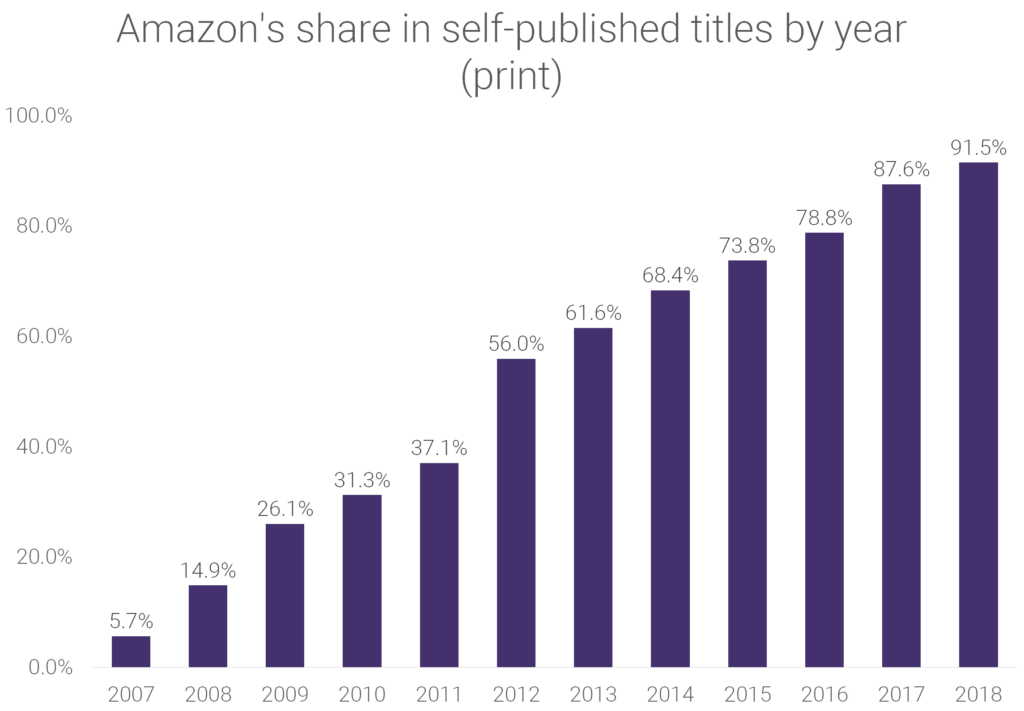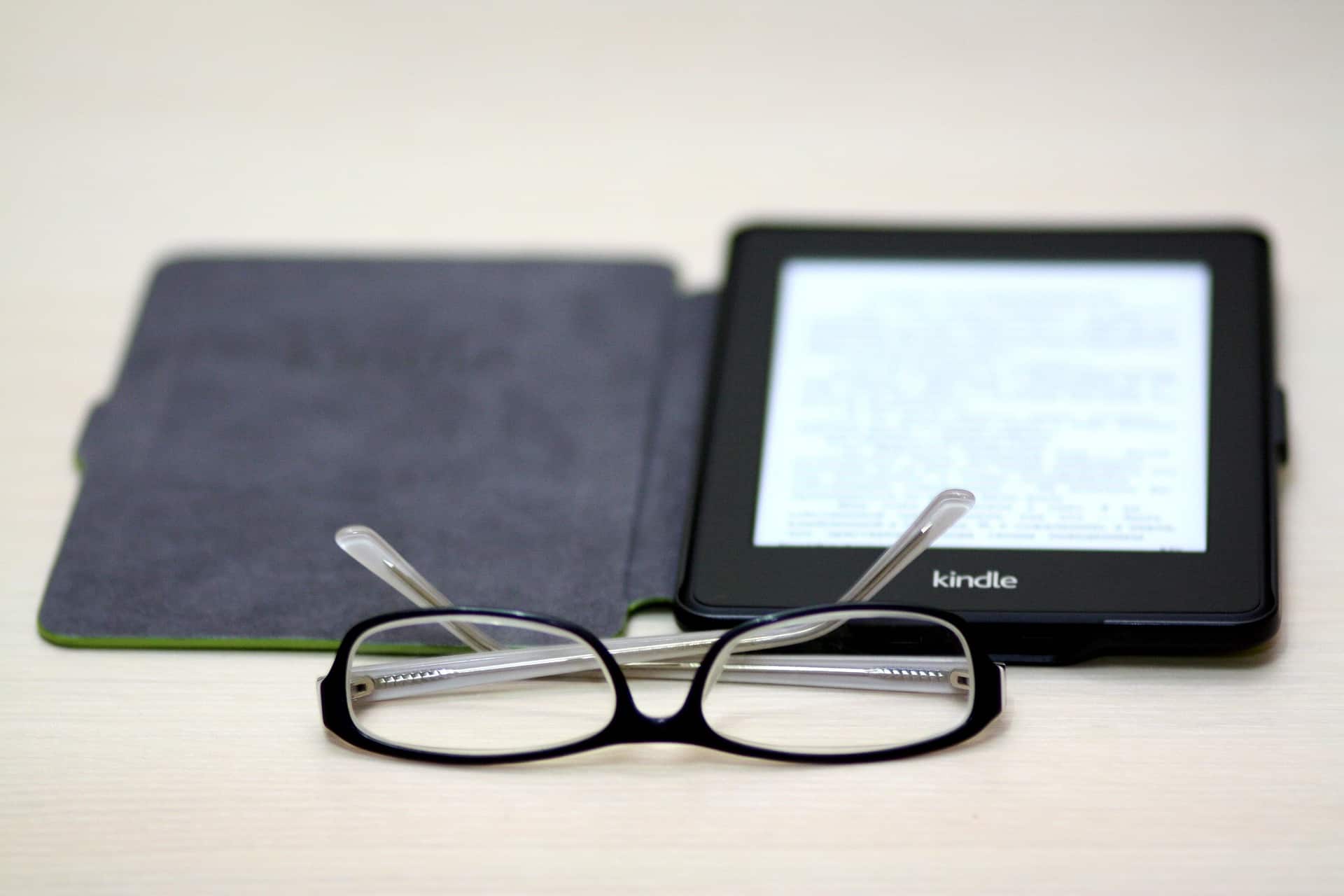Amazon’s impact on self-publishing
With the introduction of Amazon’s CreateSpace, now Kindle Direct Publishing, the company revolutionized the self-publishing world. The number of self-published books skyrocketed over the last decade or so, and Amazon dominates this world:
- In 2007, with the release of Kindle, 5.7% of all self-published books came from Kindle Direct Publishing (KDP).
- 11 years later, in 2018, Amazon published over 91.5% of all self-published books in the United States.
- During that period, the number of self-published titles on KDP jumped from 3,804 in 2007 to 1,416,384 titles in 2018.
- These numbers don’t even take into account the ebooks published on Amazon that didn’t register for ISBN number, so the overall number of self-published books through KPD is significantly higher.
- Even without the official numbers available, Amazon’s KDP is considered the largest ebook publisher of self-published ebooks on the market.
Amazon’s share in the US self-publishing is presented in the chart below:

Impact of Amazon on bookstores
As the leading online retailer, Amazon revolutionized the way people shop for books. From the moment Amazon appeared on the market, physical bookstores have undergone a significant change:
- In 1998, 3 years into Amazon’s era, there were over 12,000 bookstores in the United States.
- As of 2020, the number of physical bookstores in the USA has dropped by 52.8% since 1998 and stands at 5,733.
Independent bookstores also experienced significant changes since Amazon entered the book industry in 1995:
- There were 5,500 independent bookstores in 7,000 locations in the United States in 1995, the year when Amazon started its business.
- As of 2022, only 2,023 independent bookstores in 2,506 locations were registered, with a record-low number in 2009 with 1,401 stores in 1,651 locations.
- This means that the number of independent bookstores decreased by 63.2%, and the number of their locations decreased by 64.2% since Amazon entered the scene in 1995.
Impact of Amazon on book sales
- During the first year of Amazon, in 1995, over 61% of all book sales came from bookstores, including independent bookstores and book clubs.
- An additional 29% of book sales came from other physical channels, such as drugstores, supermarkets, discount stores, etc.
- Only 10% of sales came from “other” channels, such as Amazon.
- 27 years later, It is estimated that Amazon accounts for at least 50% of all book sales in the United States.
- In reality, this figure is probably much higher, with estimates showing that Amazon might be controlling between 70% and 80% of all book sales.
- In addition to that, Amazon controls at least 67% of the ebook market, while some estimates go over 80%.
- Over 25% of American households use Amazon’s Prime Reading feature.
- Since the introduction of Kindle, over 25% of Americans have used e-readers to read books.
- In addition to that, over 20% of Americans listen to audiobooks every year.
- 2020 was the first year where online book sales outnumbered physical bookstore sales.
Impact of Amazon on book diversity
- The average book today sells around 200 copies in a year and just over 1,000 copies in a lifetime.
- Amazon’s algorithm-based approach to book recommendation makes it harder for “low profile” books to get discovered.
- At the same time, the gap between the most popular books and the rest is getting bigger.
- Considering the ever-increasing competition and Amazon’s approach to promoting books that already sell well, authors outside of the best-selling lists have a hard time attracting the attention of the readers.

